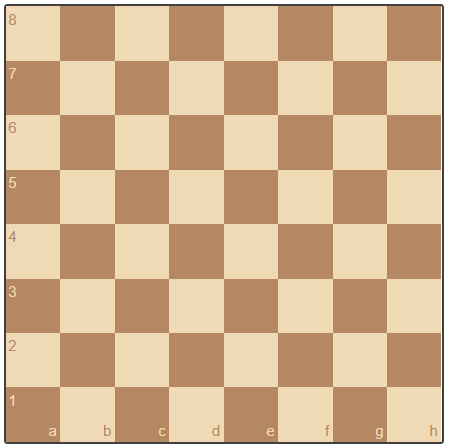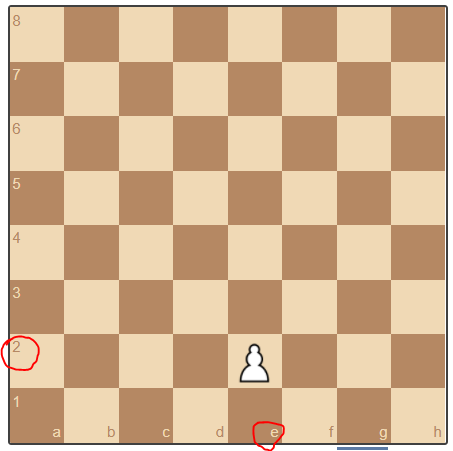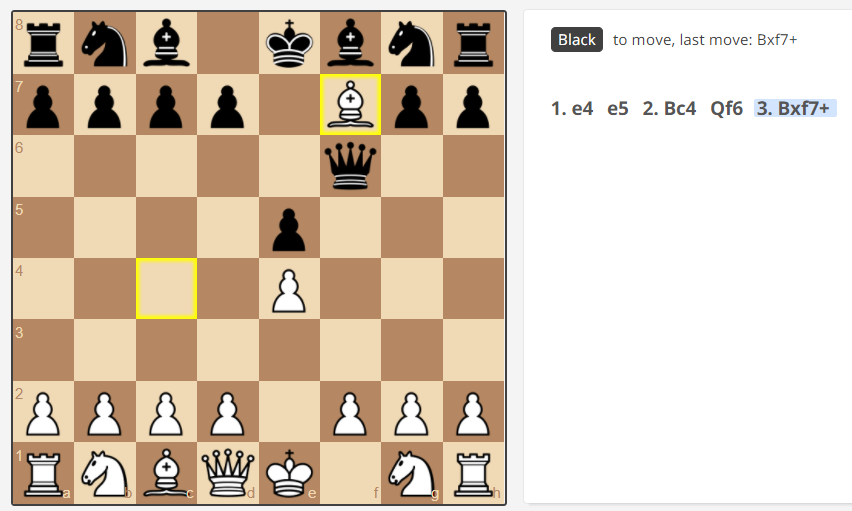Dear chess lovers,
here we start a, potentially VERY long chess learning path. I will use numbers of steps, so that if you follow them in order, you will at some point build a moderate chess player, who could possibly beat most of your friends, and you could do well in your local chess club.
Step 0 = The chessboard. Prerequisite: none.
The very first question I’ve been asking all the children I’ve been teaching is this:
“What do you see in the chessboard?”

Typical answers are: squares, black and white squares, etc.
Those answers are incomplete.
In a chessboard, we also see some letters and numbers. We have to start with this. Those are not random. They serve a purpose.
- The purpose is to be used as coordinates, to uniquely identify each one of the 64 squares.
- The horizontal rows are called ranks.
- The vertical columns are called files
- White army always start in ranks 1 and 2. Black army always start in ranks 7 and 8.
For example, this square is called e2

When we move a piece, we first use a capital letter that represents the piece, and then the co-ordinates of the square that it is landing. The capital letters are
- K for king
- Q for queen
- R for rook
- B for bishop
- N for knight (K is reserved for the king)
- for pawns, we save some letters and we write nothing! Just the landing square
Examples
e4

Nf3

Bc5

Qf6

If a piece captures an opponent’s piece, then we add the symbol x between the piece and the square.
Bxf7+
The symbol + means that we are now checking the king (threatening him)

There are some more complicated cases regarding notation, which we will see as side points in later steps.
For now, try to use this in your games. For example, before you do move your piece, try to say to yourself, or even to your opponent, how would you write the move. Or even, do write it on a piece of paper! Chess is about mistakes. So, you need to analyse and review your mistakes, in order to learn and progress. The second reason to know how to write your moves, is to communicate with other people about chess. It is inefficient to say “I moved the knight next to my bishop, well, when I say next, I really mean diagonally to the back left side. I moved it towards the centre, or perhaps to the other side, just next to my opponent’s rook”.
Before the next lesson: familiarise yourselves with the coordinates, and the notation of chess moves.
